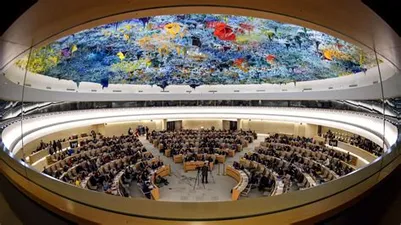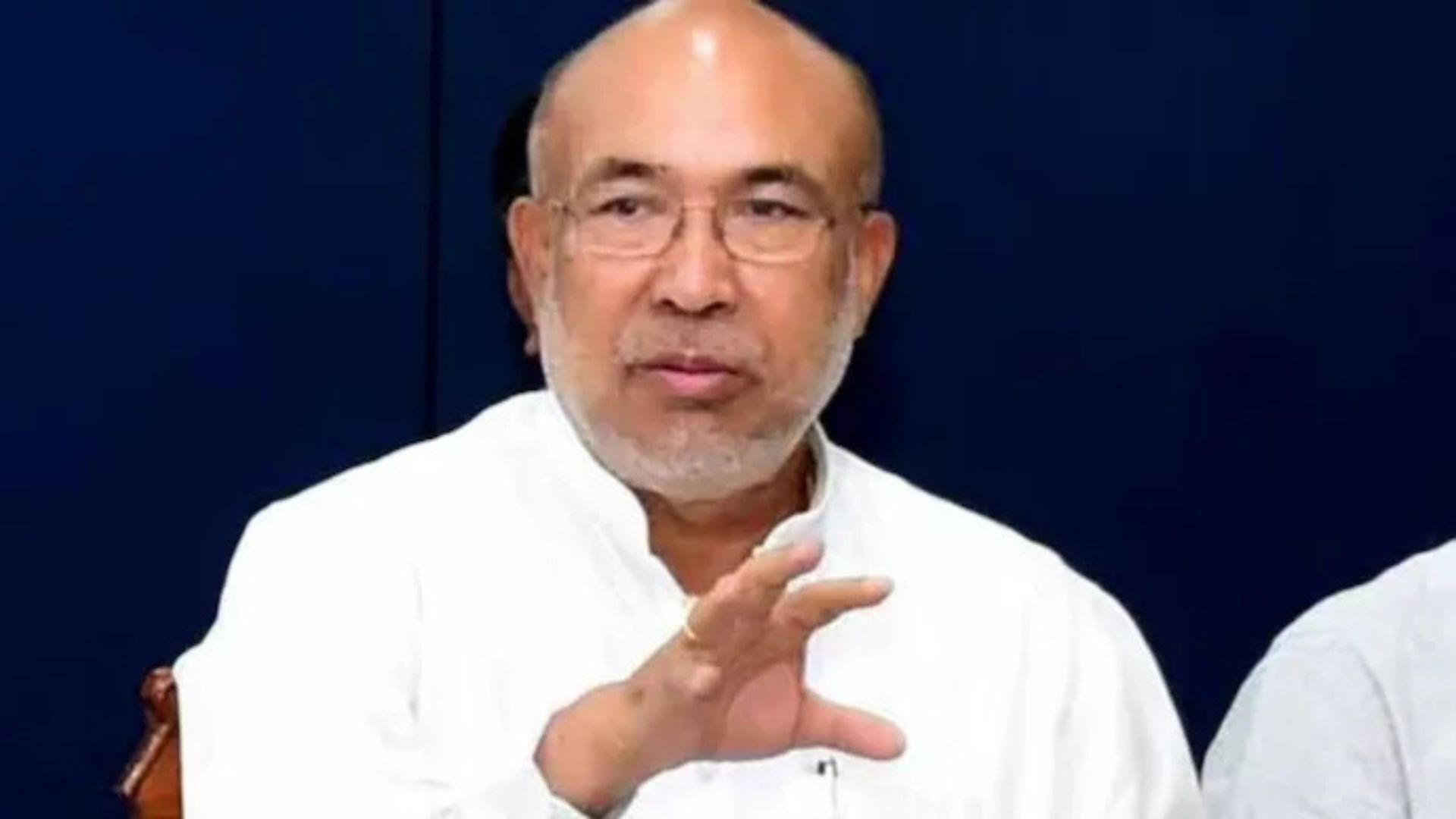
A riveting video has been making its way through social media, featuring an Indian student exposing the malicious anti-India rhetoric being promoted right under the nose of the United Nations Human Rights Council headquarters (UNHRC) and the United Nations (UN) building in Switzerland’s Geneva. The purported video, widely shared on social media, shows massive posters that read “Women in India are treated as slaves”, “Child marriages: Serious violations of child rights by India”, “Indian Christians facing State-sponsored terrorism”, “Terror attack on minorities”, “Indian Dalits: Children of lesser God”. On Sunday, India summoned the Swiss ambassador to New Delhi and lodged a protest over anti-India posters in front of the UN building.
BRINGING FACTS
TO THE FORE
The nefarious posters try to construct a narrative that is antithetical to the interests of India. Yet, upon closer examination of the evidence, it becomes apparent that spurious propaganda has been effectively thwarted at the outset. First, with regard to the claim that “women in India are treated as slaves”, data indicates otherwise. The National Family Health Survey (NFHS-5) report, which sampled a population of 7.24 lakh women and 1 lakh men in the age group of 15-49, found that the female literacy rate climbed to 72%. The World Economic Forum’s (WEF) 2022 Global Gender Gap Report, which derives its insights from LinkedIn data, sheds further light on the changing dynamics of gender in India. A revolutionary trend has emerged: between 2016 and 2021, the number of women establishing companies has grown by an astonishing 2.68 times, dwarfing the growth rate of male founders, who experienced a growth of only 1.79 times.
In terms of politics, India has been witnessing a paradigm shift in the representation of women, with a surge in their numbers over the years. The Lok Sabha elections of 1957 saw 45 women candidates, but the scenario has transformed entirely, with the 2019 Lok Sabha elections boasting a staggering 716 women candidates. Another area where women are making their presence felt is sports, with the women’s cricket team captivating the imagination of Indian fans in recent years. This year, the under-19 women’s cricket team achieved a resounding victory at the World Cup.
Second, with regard to the issue of child marriages, India has made significant strides in reducing the scourge of child marriages in the country. The National Family Health Survey-5 data reveals that the number of child marriages in India dropped from 47.4% in 2005-06 to 26.8% in 2015-16, representing a decline of 21% during the decade. In the past five years, the numbers have dropped further by 3.5%, reaching a new low of 23.3% in 2020-21. The credit for this can be attributed to a host of factors such as the increased literacy of mothers, improved access to education for girls, migration from rural areas to urban centres, and stringent laws like the Prohibition of Child Marriage Act, 2006, and the Protection of Children from Sexual Offences Act, 2012, which seek to safeguard the rights of children.
Third, the allegation of “state-sponsored terrorism against minorities in India” is categorically debunked by facts. The present government’s concern for minorities is evident in the transformation of the ministry of minority affairs from a part-time portfolio to a full-time ministry upon coming to power in 2014. Following this, the BJP-led NDA government initiated comprehensive plans for the uplift of minorities. The “Prime Minister’s 15-Point Programme for Minority Welfare” is a significant initiative to ensure a proportionate share of priority sector lending is directed toward minority communities, and government-sponsored schemes are extended to underprivileged minority communities. The programme is being implemented by concerned Central Ministries and Departments through State Governments/Union Territories and includes the placement of development projects in minority concentration districts. The government has initiated numerous schemes aimed at enhancing the employability of boys and girls hailing from various minority communities through skill development programs.
Fourth, regarding the status of Dalits, their social and financial inclusion has been at the heart of the current Union dispensation. The government is making strenuous efforts to bring the marginalized section into the mainstream through schemes like the MUDRA yojana, which has provided a sustainable platform to the downtrodden sections for entrepreneurship. As a matter of fact, 51% of loan accounts under this scheme were sanctioned for backward classes in FY2021-22. The historical corrections like the abrogation of Articles 370 and 35-A from Jammu & Kashmir to restore full citizenship rights for Dalits is a serious attempt to bring them to par with the rest of the citizenry.
The blatant ignorance of the UN, UNHRC and the municipal authorities in Geneva of the malicious anti-India campaign going at a place where all the important offices concerning human rights are located, has come at a time when India is making its presence felt across the globe. It is pertinent to expose the hypocrites’ masquerade of virtue, given that on 1 April 2022, the UN Human Rights Council adopted a new resolution on disinformation, which highlights the importance of combating the spread of misinformation.
It is worrying when people in Geneva do not object to false propaganda, as this can lead to the spread of inaccurate information and beliefs. There could be various reasons why people in Geneva might not object, such as a lack of awareness or understanding of the issue or general apathy towards the truth. Whatever the reason, the consequences of not challenging misinformation can be significant, ranging from harmful social and political outcomes to a breakdown in trust and cooperation among people and institutions.
Contrary to their main aim of protecting and promoting human rights worldwide, the United Nations (UN) and the UNHRC have allegedly been giving a carte blanche to individuals and groups who spread misinformation and false campaigns against India. Instead of providing space for peaceful protests and constructive dialogues on human rights issues, these world-level organizations have been allowing their platforms to be used by those who have an agenda of spreading falsehoods and propaganda. This not only undermines the credibility of these institutions but also hampers efforts to address genuine human rights concerns.
Kartikey Singh is a 3rd year law student at the Rajiv Gandhi National University of Law; Shubham Shukla is a 5th year law student at RGNUL.















